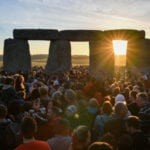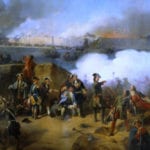 Weird Stuff
Weird Stuff  Weird Stuff
Weird Stuff  Our World
Our World 10 Ways Your Christmas Tree Is More Lit Than You Think
 Movies and TV
Movies and TV The 10 Coolest Stars to Set Sail on The Love Boat
 History
History 10 Things You Didn’t Know About the American National Anthem
 Technology
Technology Top 10 Everyday Tech Buzzwords That Hide a Darker Past
 Humans
Humans 10 Everyday Human Behaviors That Are Actually Survival Instincts
 Animals
Animals 10 Animals That Humiliated and Harmed Historical Leaders
 History
History 10 Most Influential Protests in Modern History
 Creepy
Creepy 10 More Representations of Death from Myth, Legend, and Folktale
 Technology
Technology 10 Scientific Breakthroughs of 2025 That’ll Change Everything
 Weird Stuff
Weird Stuff Ten Bizarre Facts About The Doge Meme
 Our World
Our World 10 Ways Your Christmas Tree Is More Lit Than You Think
 Movies and TV
Movies and TV The 10 Coolest Stars to Set Sail on The Love Boat
Who's Behind Listverse?

Jamie Frater
Head Editor
Jamie founded Listverse due to an insatiable desire to share fascinating, obscure, and bizarre facts. He has been a guest speaker on numerous national radio and television stations and is a five time published author.
More About Us History
History 10 Things You Didn’t Know About the American National Anthem
 Technology
Technology Top 10 Everyday Tech Buzzwords That Hide a Darker Past
 Humans
Humans 10 Everyday Human Behaviors That Are Actually Survival Instincts
 Animals
Animals 10 Animals That Humiliated and Harmed Historical Leaders
 History
History 10 Most Influential Protests in Modern History
 Creepy
Creepy 10 More Representations of Death from Myth, Legend, and Folktale
 Technology
Technology 10 Scientific Breakthroughs of 2025 That’ll Change Everything
10 Famous Festivals That Ended In Complete Disaster
Festivals—a hectic schedule of your favorite bands playing live, a pilgrimage into the great outdoors, a chance to meet like-minded new friends, and a lifetime of memories. At least, that’s what promoters would have you believe. So what happens when these expectations are not a reality and the event is plunged into chaos?
SEE ALSO: 10 Frozen Timepieces That Marked Death And Disaster
These following disasters have left furious ticket holders demanding their money back and event organizers red-faced. What was supposed to be the time of their lives became a weekend of hell.
10 Fyre Festival
2017
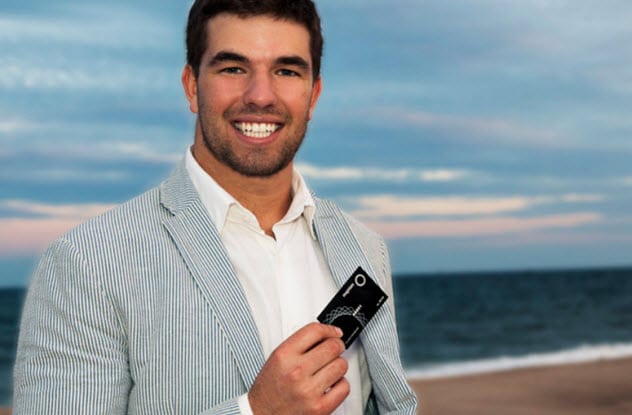
Anyone who has had access to the Internet in the past couple of years would have heard about the disaster that was Fyre Festival. Located in the Bahamas, it was billed as the most luxurious festival in the world and promoted by the most elite models around the globe.
After paying between $1,200 and $100,000 each, ticket holders were promised flights from Miami, luxury accommodation on yachts, kayaking on the crystal clear waters, and performances from Major Lazer and Blink-182.
When attendees landed on the island, they soon found all they were promised was not coming to them. The accommodations were recycled refugee tents, the food was prepackaged sandwiches instead of gourmet meals, and no medical or event staff was on hand. There was also no cell phone or Internet service and no running water. The festival became the subject of a Netflix documentary, Fyre: The Greatest Party That Never Happened.
Organizer Billy McFarland, then 26, pleaded guilty to fraud and was sentenced to six years behind bars.[1]
9 Woodstock
1999
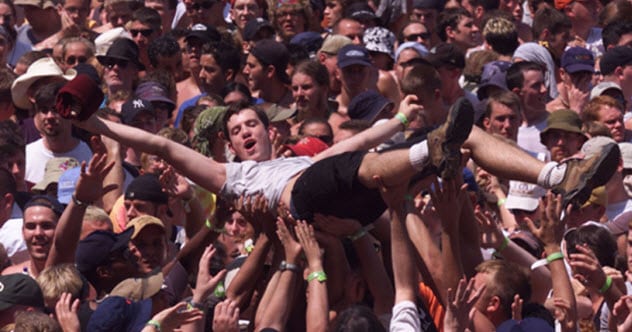
To see headliners like Jimi Hendrix, Janis Joplin, The Grateful Dead, and Joe Cocker, half a million people attended the Woodstock festival in 1969. Fast-forward 30 years, and it was a completely different scene as organizers tried to emulate the hippie era. Woodstock ’99, which took place in Rome, New York, was attended by 220,000 people and went wrong from the very beginning.
Organizers had failed to advise attendees to bring enough water, and the dehydrated crowds were met with a $4 charge for a single bottle. The Baltimore Sun reported, “More than 700 had been treated for heat exhaustion and dehydration.”
Crowd control was also a serious issue. Volunteer security was recruited from New York City. But as things became hostile, they ditched their posts and left the police dangerously outnumbered.
Then there was the problem with overcrowding as many were using fake passes to get through the gates. The Syracuse Post-Standard reported, “Security guards said they were confiscating fake passes at the rate of 50 an hour at just one gate.” Far from “peace, love, and happiness,” that was the final Woodstock event.[2]
8 TomorrowWorld
2015

In 2015, international music festival TomorrowWorld in Chattahoochee Hills, Georgia, devolved into near-riots. Heavy rain turned the fields into a sinking mud pit, and organizers decided to limit transport services back to the surrounding areas which left thousands stranded.
Festivalgoers had two choices: either hike for about 8 kilometers (5 mi) or pay for an Uber that charged a surge price of five times the normal rate. Instead, many decided to sleep on the side of the road. They were not supplied with any food or water.
One attendee told Vice News that he managed to leave the event by sneaking onto a shuttle bus for event staff. He recalled, “By the time we flagged down that bus, we were up to over $100 pooled together to try to buy our way out. The rich and the lucky rode, the poor walked, and the poor and tired stopped wherever they could find open ground.”[3]
The Belgium-founded festival will always be remembered for this post-apocalyptic atmosphere.
7 Bloc Festival
2012
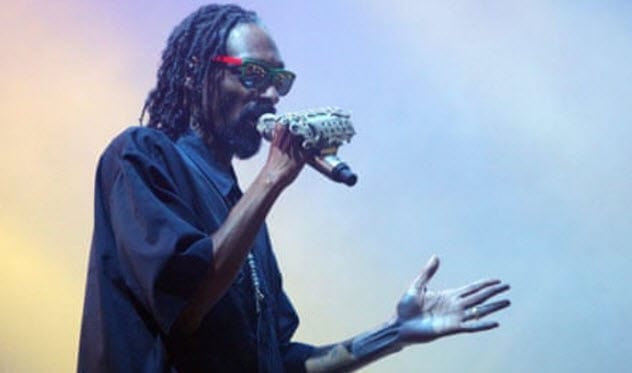
To call Bloc Festival in 2012 “chaotic” might be an understatement. One of the largest electronic dance music festivals in the UK was shut down due to serious safety fears with overcrowding.
Police were sent to help safely evacuate the attendees at the Royal Victoria Docks venue. Many people still stood in the same queue they had been in for hours as they waited to get in. Disgruntled ticket holders had paid upward of $100 each to watch acts like Snoop Dogg and Orbital perform.
Bloc then began trending on Twitter for all the wrong reasons. People posted photos of attendees stuck behind crowd control barriers and held back by a huge police presence.
One tweet read, “Bloc is um a disaster right now. We’re in the middle of a car crash.” Another tweeted, “Scary, and very nearly led to injuries; all we were told was ‘move back’—where to exactly?”[4]
After 2016, the founders shut down the annual festival and focused on building their own “super club” instead.
6 Glastonbury
1990 And 2005
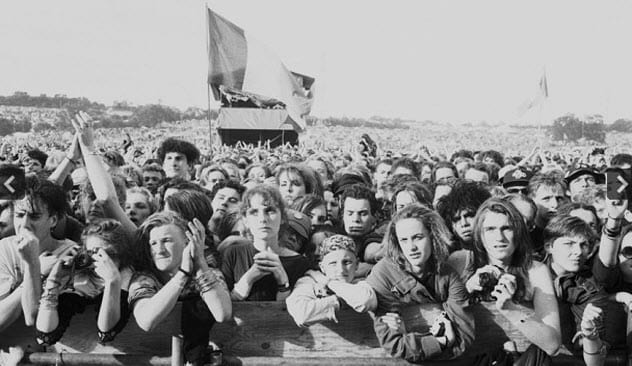
It’s a wonder that organizers would allow the Glastonbury festival to descend into chaos after two decades of hosting it. But that’s exactly what happened in 1990. That year, the crowds should have remembered the event for headliners Sinead O’Connor and The Cure, but the risk of “near-asphyxiation” made the headlines instead.[5]
More than 75,000 people were in attendance at the famous Pyramid Stage, causing a huge crush in the crowd. Bands even had to stop their sets as helicopters landed nearby to tend to the injured.
In 2005, people were at risk again. This time, it was due to 1.2 meters (4 ft) of water flooding the camping sites and performance area. Even the Acoustic Stage wasn’t safe as it was struck by lightning.
The flooding disaster led organizers to eventually fork out millions on a new drainage system before they returned two years later. Despite these bad experiences, Glastonbury is still considered one of the greatest music festivals in the world.
5 Isle Of Wight
2012
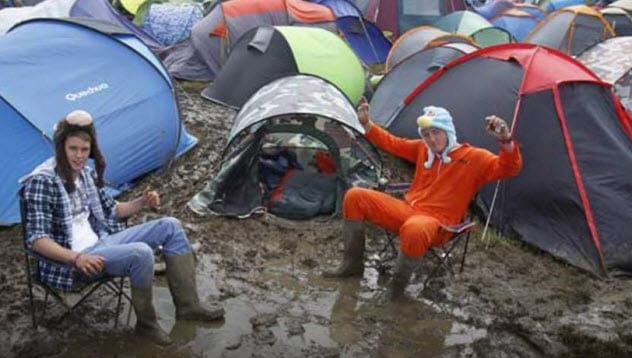
In 2011, the Isle of Wight festival promised an epic lineup featuring Tom Petty, Pearl Jam, Bruce Springsteen, Biffy Clyro, and more. Then came the heavy rain, which forced 600 people to sleep in their cars overnight as boats transporting them to the island could not dock due to the severe weather. Others were left gridlocked in traffic for more than 15 hours. Police even opened a local football club for people to take shelter through the night.
The following day, organizers told attendees that they should ditch their cars if they wanted a chance to make it to the festival. Speaking of the experience, one festivalgoer told Sky News, “We’ve gone through some highs and some lows, it’s been 14 hours, and we’re sleep-deprived. Fortunately, we’ve took a lot of food with us, but there were people there that had no food.”[6]
She added, “There were people with kids, people with dogs, so we tried to remain in high spirits, but it’s been a long slog.”
4 Bestival
2008
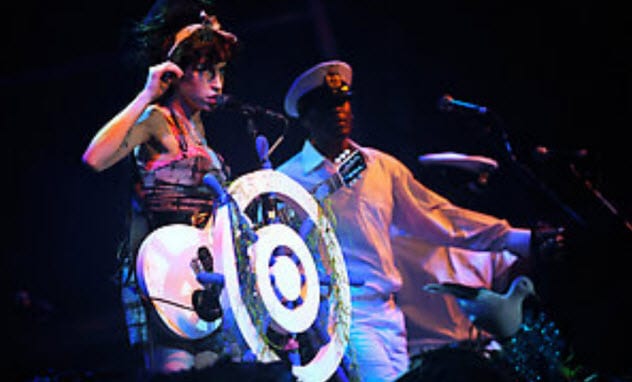
Turning up to a festival, you can always expect some mud. But no one at Bestival in 2008 could have predicted how severe the conditions would become. The weather was so bad that year as thunder, lightning, rain, and gale-force winds ripped through the camping grounds.
Many had their tents submerged in the mud. The less fortunate had their camps completely blown away with their belongings. Even the main stages for the performances began to sink into the ground.
Despite the ongoing battle with a furious Mother Nature, Bestival attendees were looking forward to seeing headliner Amy Winehouse perform. That didn’t quite go as planned, either.
Arriving onstage 40 minutes late, Winehouse—who was battling drug and alcohol addiction at the time—staggered around the stage, swilled her drink, and cut the set short by performing for only 30 minutes. The soul singer was met with boos from the crowd.[7]
Sadly in 2011, she died at age 27 due to alcohol poisoning.
3 Electric Daisy Carnival
2010
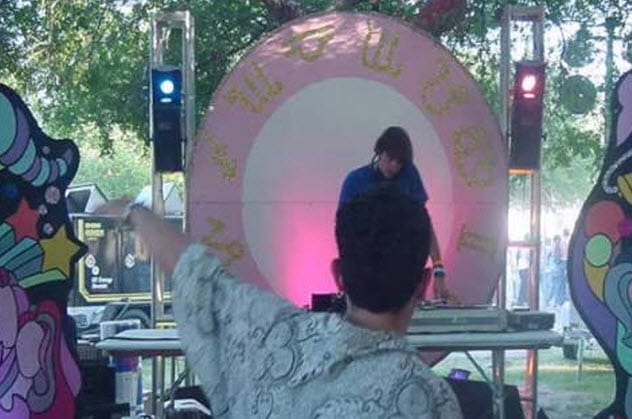
During the 1990s, Electric Daisy Carnival (EDC) attracted many festivalgoers thanks to the rise in popular electronic dance music. The event began as a warehouse party held in Austin, San Bernardino, New York City, Los Angeles, and Puerto Rico.
Attendees depended on handouts, which would announce the exact location of the raves until it blew up into something much bigger. Word had leaked out that EDC was the hottest party in town. Unfortunately, that also attracted a lot of minors.
In 2010, the event at the Los Angeles Memorial Coliseum was overwhelmed by the number of attendees under 18 years old. Heavy drugs were in use among the minors, and tragically, a 15-year-old girl died during the event.
Los Angeles forced EDC out of the area. The organizers stated, “Without an executed contract in place at this time, it has become impossible to guarantee to all of the fans and talent that EDC can be produced at this venue this year.” The event eventually found a new home in Las Vegas, and they hit a record attendance of 700,000 people in 2014.[8]
2 Sled Island
2013
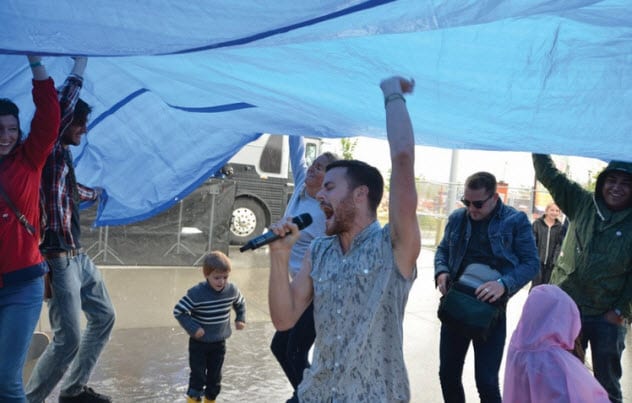
Sled Island festival in Calgary, Canada, has recovered well from its disastrous attempt in 2013. Acts including The Jesus and Mary Chain, Explosions in the Sky, Divine Fits, and Mac DeMarco were scheduled to appear alongside more than 250 other bands over the four-day weekend in June. That was until severe weather shut down the entire event.
On the second day of the festival, director Maud Salvi received mandatory evacuation orders due to rising floodwaters. The permits for the festival had been revoked, and the event organizers posted on their website: “In light of the current emergency situation, and in line with our commitment to the safety of festivalgoers, all remaining Sled Island festival events are canceled.”
Sled Island festival lost a fortune due to the cancellation. Ticket holders were offered refunds, which amounted to around $200,000. The festival came back the following year, proving that previous severe flooding wasn’t going to dampen their mood.[9]
1 Powder Ridge Rock Festival
1970
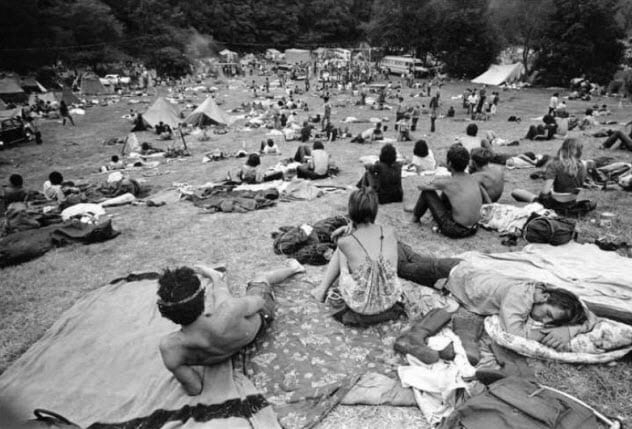
Powder Ridge Rock Festival has become known as “the greatest rock concert that never happened.” Following the success of Woodstock, promoters were hoping to be the next big rock festival that people would flock to in the thousands. In 1970, more than 50,000 people were expected to arrive at Powder Ridge Rock Festival in Middlefield, Connecticut, to see rock royalty Fleetwood Mac and Janis Joplin.
Then, just one month before, the town of Middlefield rejected the application for the festival as local residents took legal action. In a time before the Internet, word did not get back to all attendees that the festival was canceled and 30,000 individuals showed up anyway.[10]
There was no food, no music, and no water supply. But there were a lot of drug dealers. Doctors volunteered their services to help with the “drug crisis” that took place over the next few days as heavy hallucinogens were being used. By the end of the weekend and many bad drug trips later, the attendees eventually left Powder Ridge.
Cheish Merryweather is the founder of Crime Viral. A true crime and oddities fanatic. Twitter: @thecheish.
Read more crazy facts about bizarre festivals around the world on Top 10 Bizarre Festivals Of Violence From Around The World and Top 10 Bizarre Festivals in India.




